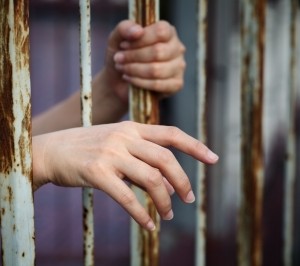Crime and Violence

Explanations of Crime
Historically biological and psychological explanations of crime have been investigated. However, sociologists look to social factors to explain violence and crime. Going back to our social forces (history, environment, and culture), how do social forces play a role in one’s tendency to be violence or commit crimes? A sociologist focuses on the social conditions (including our social structures) that produce violence and crime. A sociologist also believes that social policy changes as well as changes within our social structures are oftentimes needed to reduce violence and crime. (Image courtesy of sakhorn38/FreeDigitalPhotos.net)
“Criminal Activities Survey”
This example includes data of Florida law as an example of illegal activity and penalties.
Ask yourself the following questions:
1. Have you ever been in possession of drug paraphernalia?
2. Have you ever lied about your age, or about anything else when making application to rent an automobile?
3. Have you ever intentionally destroyed or erased someone else’s phone message?
4. Have you ever tampered with a coin-operated vending machine or parking meter?
5. Have you ever loaned or given away lewd or obscene materials?
6. Have you ever begun and/or participated in an office basketball or football pool?
7. Have you ever used “filthy, obscene, annoying, or offensive” language while on the telephone?
8. Have you ever given or sold a beer to someone under the age of 21?
9. Have you ever been on someone else’s property (land, house, boat, structure, etc.) without that person’s permission?
10. Have you ever forwarded a chain letter with the intent to profit from it?
11. Have you every improperly gained access to someone else’s e-mail or other computer account?
12. Have you ever written a check when you knew it was bad?
EACH of the actions described in the previous questions denotes criminal activities and was subject to fines, imprisonment, or both under Florida law in 2000. The following indicates the possible consequences:
Maximum Prison Sentence Maximum Fine Offense
1. One year $1000 Possession of drug paraphernalia
2. Five years $5000 Fraud
3. Two months $500 Unlawful interference with telecommunications
4. Two months $500 Fraud
5. One year $1000 Unlawful dissemination of obscene material
6. Two months $500 Illegal gambling
7. Two months $500 Harassing/obscene telecommunications
8. Two months $500 Illegal distribution of alcohol
9. One year $1000 Trespassing
10. One year $1000 Illegal gambling
11. Five years $5000 Illegal misappropriation of cyber communication
12. One year $1000 Worthless check
SOURCE: Florida Criminal Code.2000. http://www.leg.state.fl./statutes.index; Mooney, Knox, and Schacht (2005); Understanding Social Problems, Wadsworth-Thomson Learning Inc.
Are you surprised by any of the penalties outlined above? Have you engaged in any of the criminal activity noted above? If you were charged and sentenced with the maximum sentencing how do you think you would be changed by your experiences (legal system, police, jail, etc.)?
Social Theory to Explain Violence and Crime
The following theories and concepts help to explain why individuals and groups are deviant, violent, and/or commit crimes. Note that Rational-Choice Theory is not in your readings but is an important explanation of violence and crime. Click on the link below for further explanation of this theory.
Social Theory
Functionalist Perspective Conflict Perspective Symbolic Interactionist Perspective
Strain Theory Class oppression Differential Association Theory
Social Control Theory Inequality in the criminal justice system (racial profiling, sentencing inequality)
Subculture Theory
Rational-Choice (Exchange) Theory Social Control Theory (bonds, attachments, commitments, involvements, and beliefs)
Labeling Theory
Inequality in the Criminal Justice System
Black codes (prior to the Civil War) were laws that stipulated that Blacks could be treated far more severely than Whites for similar crimes. For example: 1)a rape of a Black woman was not considered a crime but the alleged rape of a white woman was 2) Blacks were executed for property crimes (burglary or arson) while white had to pay a fine or serve a short jail term, and 3) Blacks could not testify or serve on juries
Racial Profiling
Study: In San Diego, California (2001) the police department was presented with a large grant. They could have bought new police cars but they decided to use the money to investigate racial profiling. They found that Blacks were 8% of the driving age population, 12% of the traffic stops, and 20% of the stopped and searched. How is this an indicator of racial profiling? If Blacks are 8% of the driving population they should represent 8% of those stopped and 8% of those searched…obviously they are overrepresented.
They also found that Latinos were 20% of the driving age population, 29% of the traffic stops, and 50 of the stopped and searched. How is this an indicator of racial profiling? Latinos are also overrepresented. Is this due to the Mexican boarder and who and what police officers are looking for? Is this racial profiling?
In another study conducted in Florida (2000) it was found that 5% of the drivers were Black or Latino but represented 70% of those stopped and 80% of those searched.
In a national study it was found that Blacks are 13% of the United States population, 13% of the drug users, 35% of those arrested for drug related offenses, 55% of those convicted of drug related offenses, and 74% of those sent to prison for drug offenses. At the rate we are going by the year 2020 two out of every three Black men between the ages of eighteen and thirty-four years old will be in prison. Can this act as a self-fulfilling prophecy (Labeling Theory) for young Black men?
Television
We have heard so much as to the negative effects television has on our youth. Are those that watch television more violent? Do parents need to monitor the television their children watch more closely? Click on the following link for more information:
There is a relationship between dropping out of school and criminal activity. It has been noted that an important solution to juvenile delinquency as well as a solution to violence and crime among adults is education…the proactive approach. That is, being proactive and increasing educational opportunities for those at risk.
About admin
Teaching Sociology is very enjoyable for me. Sociology is like a gateway to a plethora of knowledge and understanding. The subject material is directly applicable to real-world events and situations found in everyday life. The methods and concepts of sociology yield powerful insights into the social processes shaping the contemporary world. The ability to identify and understand these processes is valuable preparation for professional participation in an ever changing and complex society.Related Posts
Latest News
-
Sociology and the Pursuit of Social Justice: A Compelling Reason to Study It
Sociology is a fascinating field of study that delves into...
- Posted May 31, 2023
- 0
-
The Power of Sociology: Understanding the Importance of Social Structures
Sociology is the scientific study of society, social relationships, and...
- Posted May 31, 2023
- 0
-
FACT FINDING MISSIONS
Life is interleaved with contracts and agreements, the formal and...
- Posted August 10, 2018
- 0
-
The Many Churches of Enhancement
Throughout history religions formed around prophetic doctrines and absorbed people...
- Posted April 6, 2018
- 0
-
TAKE A SECOND TO CONSIDER THE SECOND
Remember that during the late 1700’s when the young US...
- Posted February 21, 2018
- 0
-
WHAT’S ON THE TABLE FOR IMMIGRATION
Deliberating in upcoming months will be a new proposal for...
- Posted February 12, 2018
- 0
-
Time-saving Tips from Your Instructor
Here are some helpful tips: Involve your family/friends. Let them...
- Posted October 19, 2016
- 0
-
Sociology and the Pursuit of Social Justice: A Compelling Reason to Study It
Sociology is a fascinating field of study that delves...
- May 31, 2023
- 0
-
The Power of Sociology: Understanding the Importance of Social Structures
Sociology is the scientific study of society, social relationships,...
- May 31, 2023
- 0
-
FACT FINDING MISSIONS
Life is interleaved with contracts and agreements, the formal...
- August 10, 2018
- 0
-
Successful Families
SUCCESSFUL FAMILIES Balancing Work and Family (dual-earner families) 1.Value...
- June 16, 2011
- 0
-
Sociology of Marriage
Types of “Good” Marriages: Romantic Marriage: passion and sex...
- June 16, 2011
- 0
Sociological Theory
-
Symbolic Interactionism
Symbolic interactionism focuses on how individuals communicate with one another, the basis...








